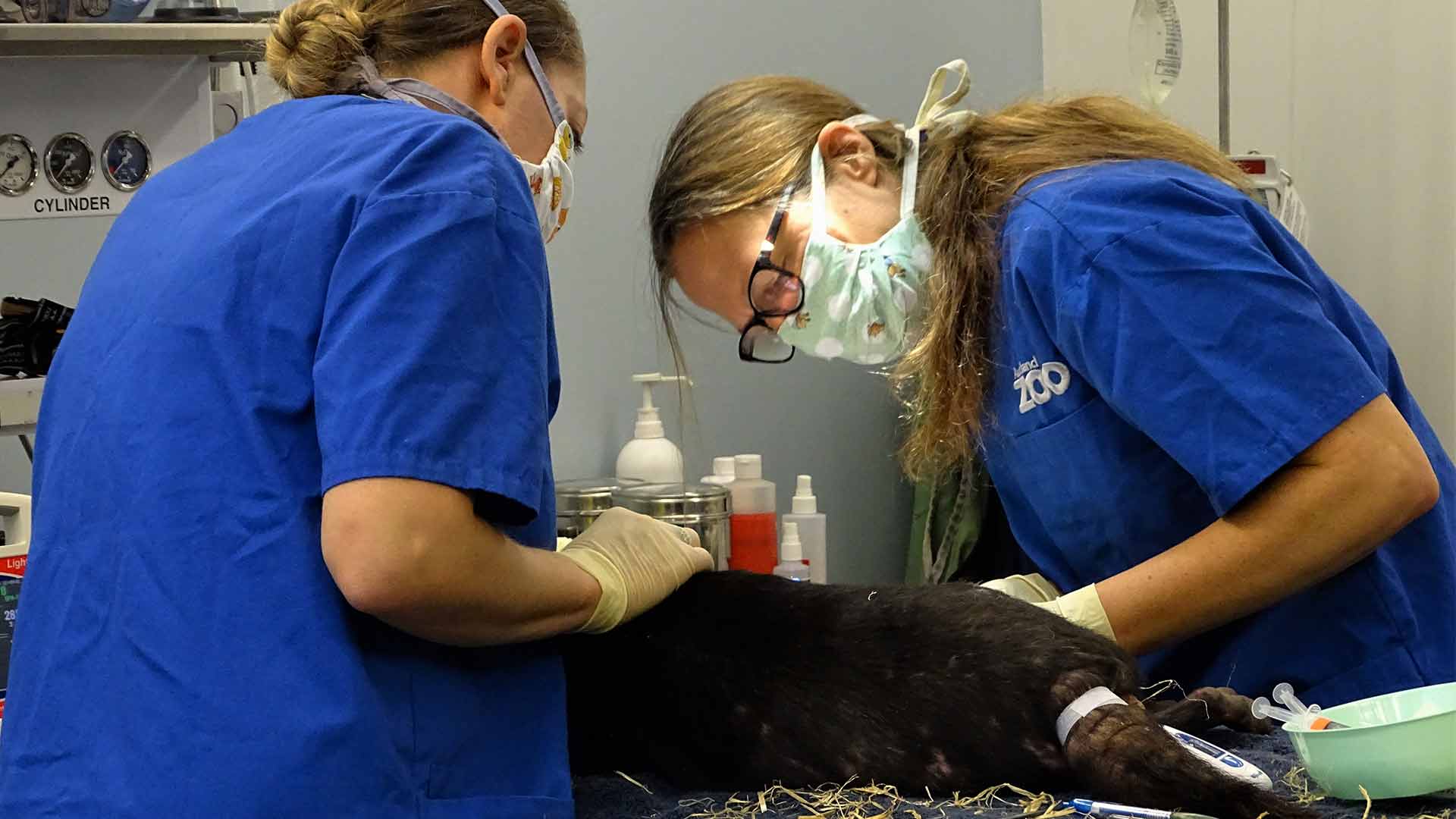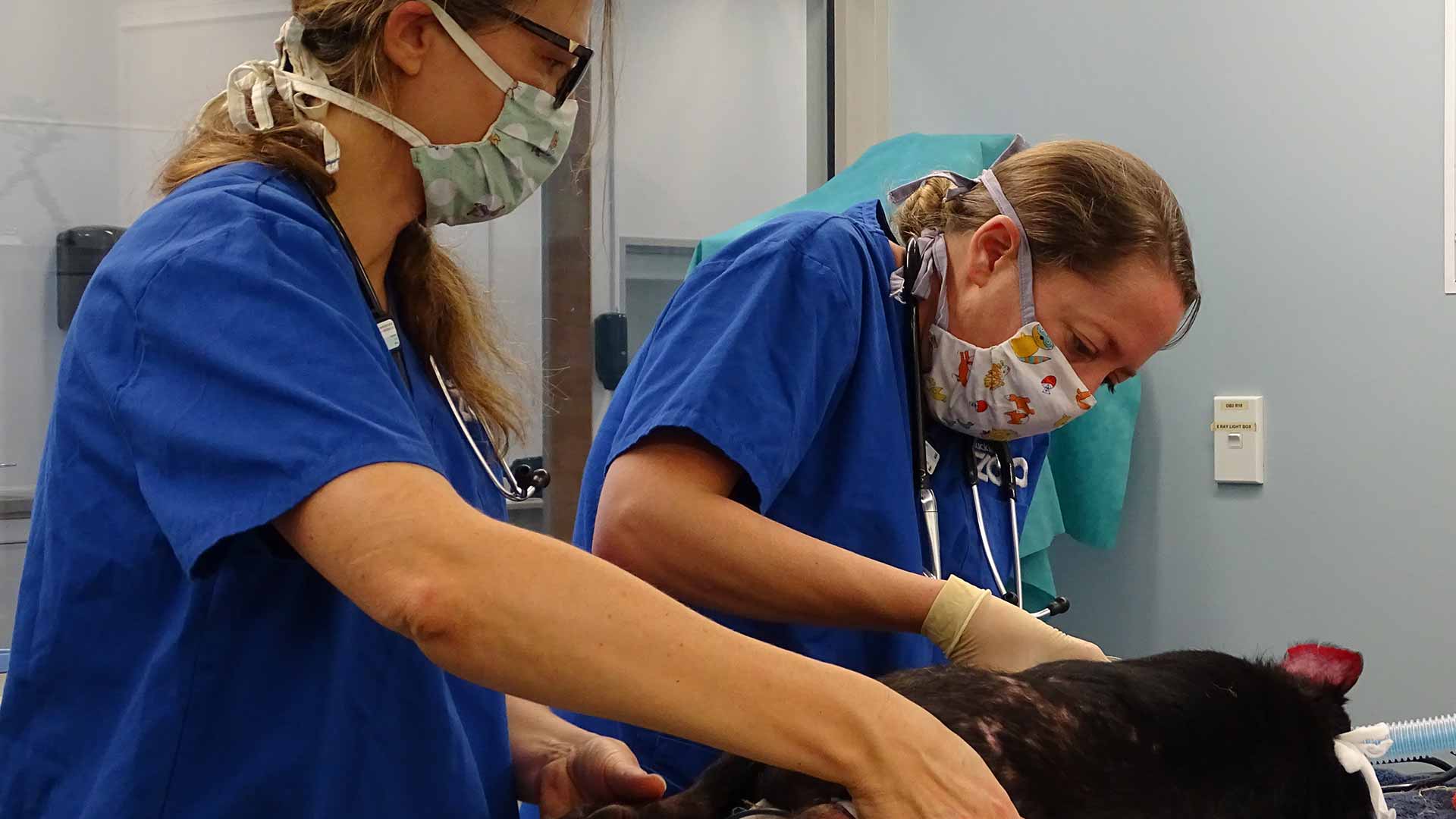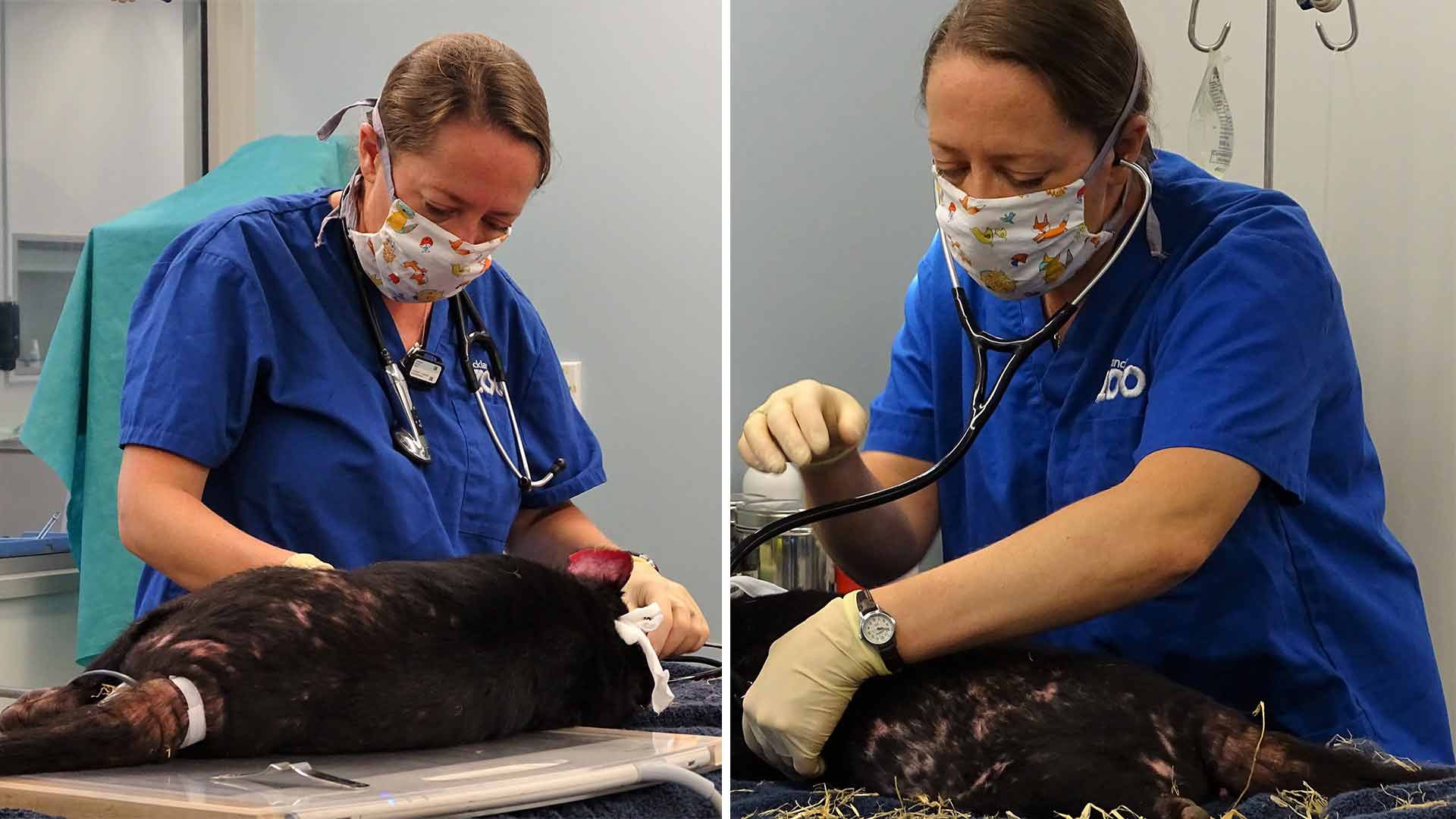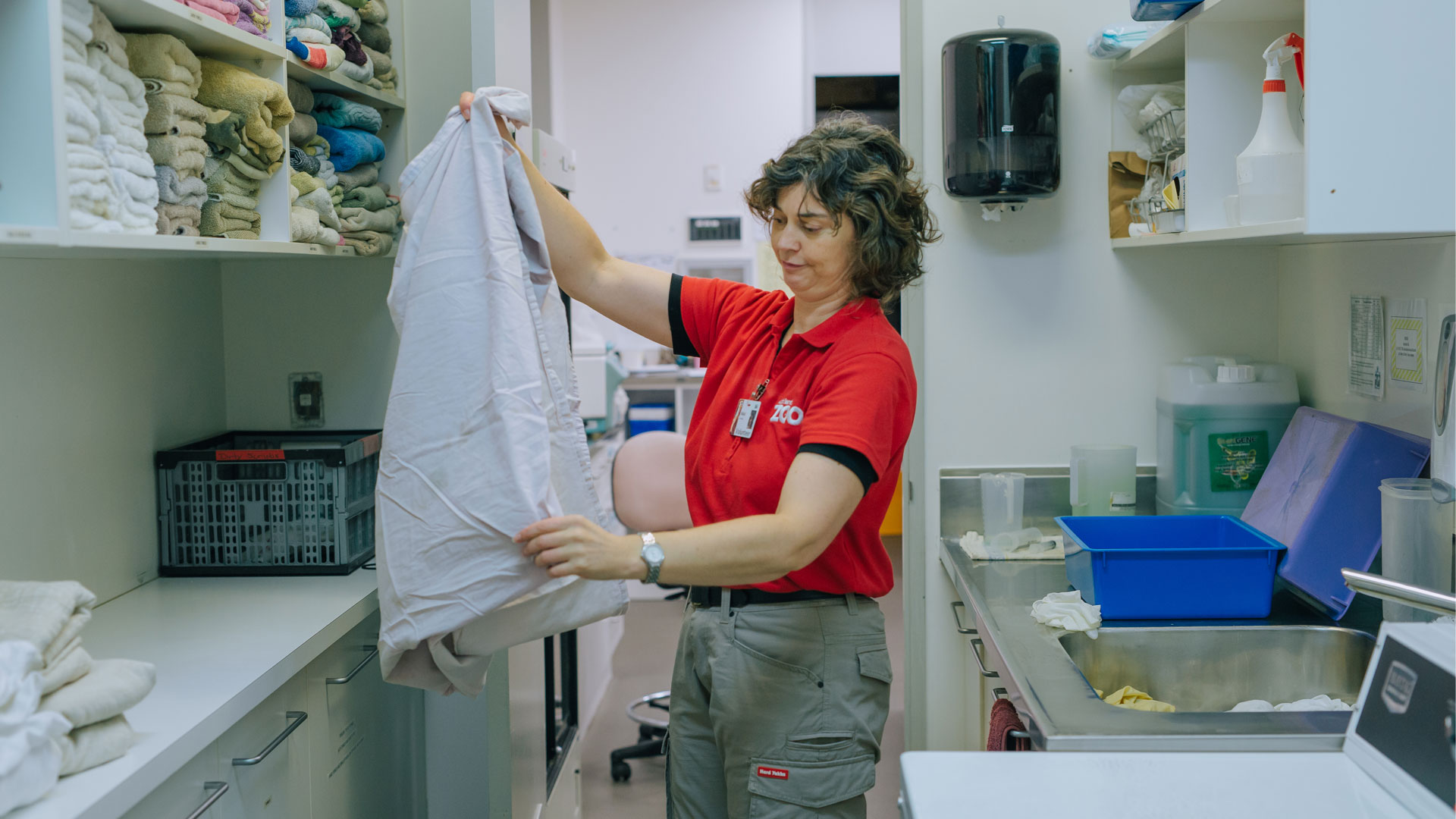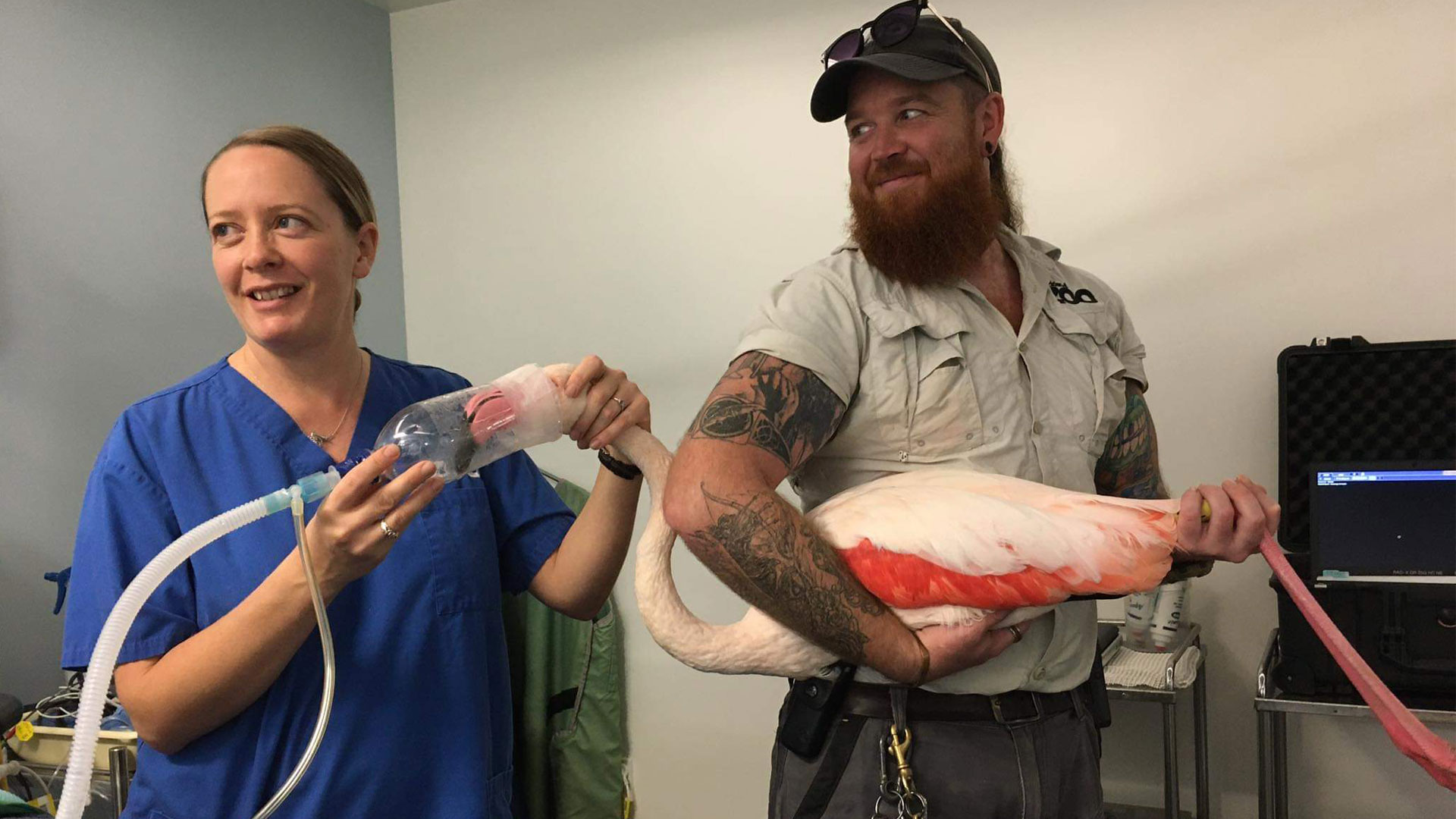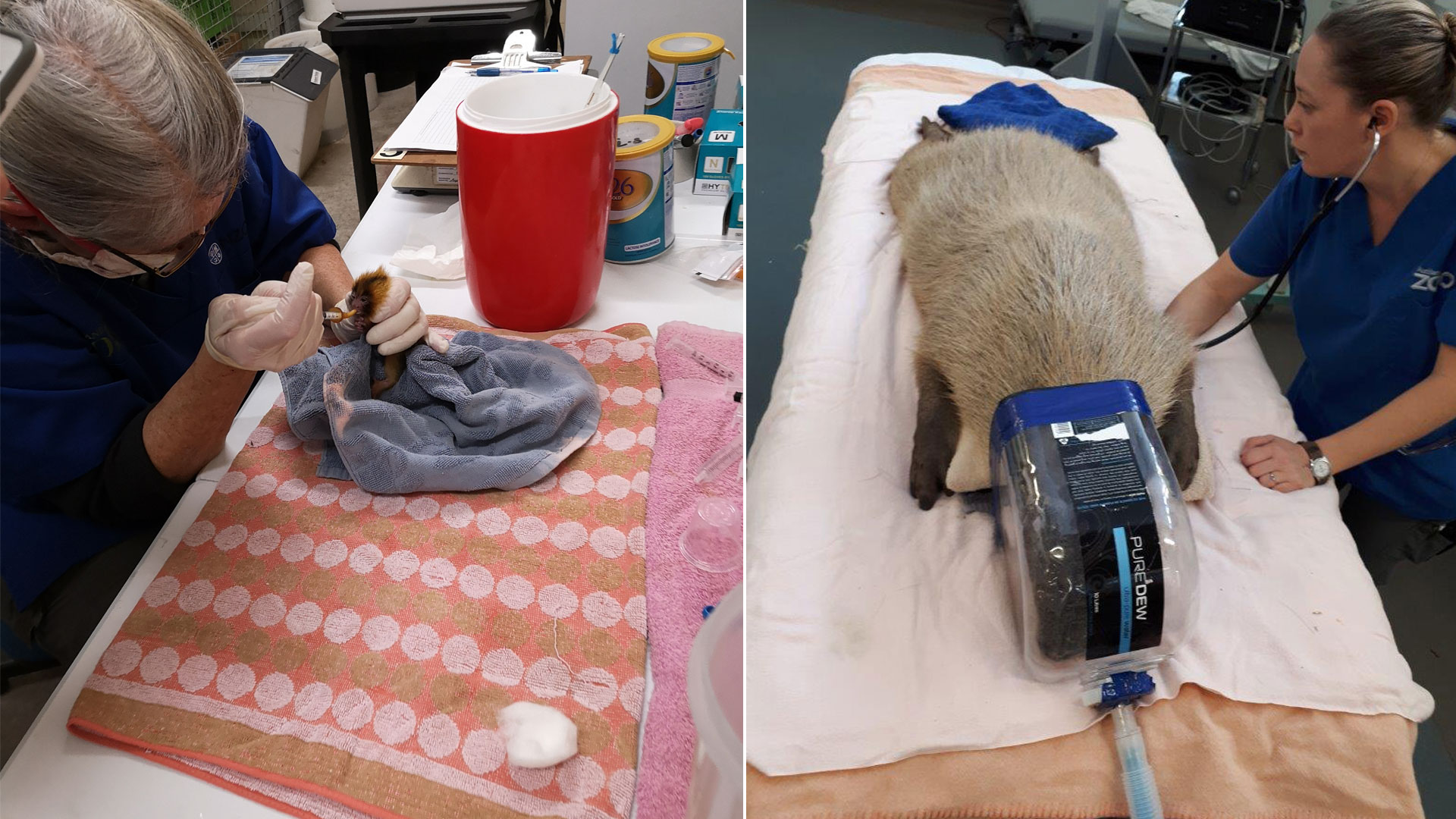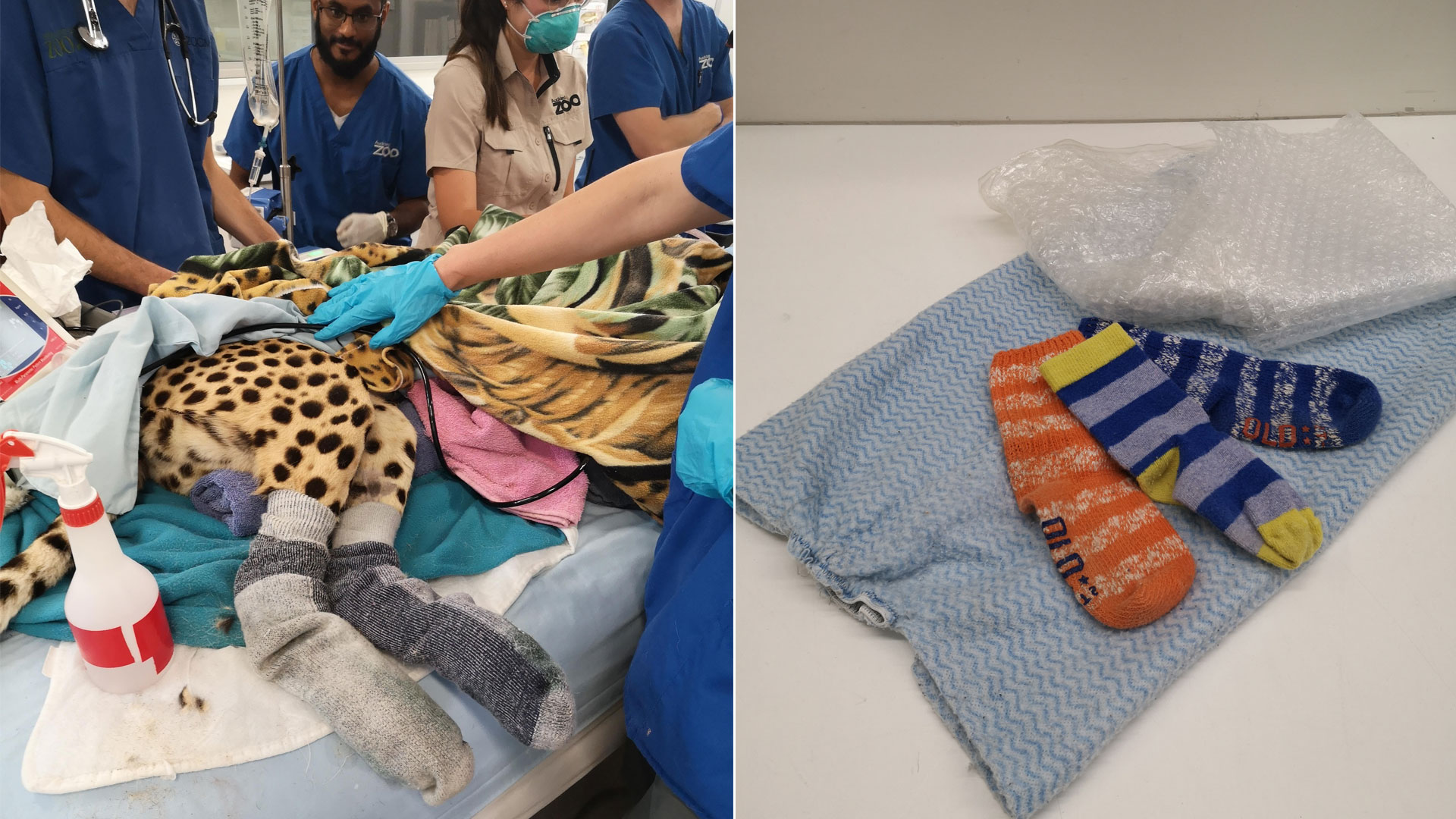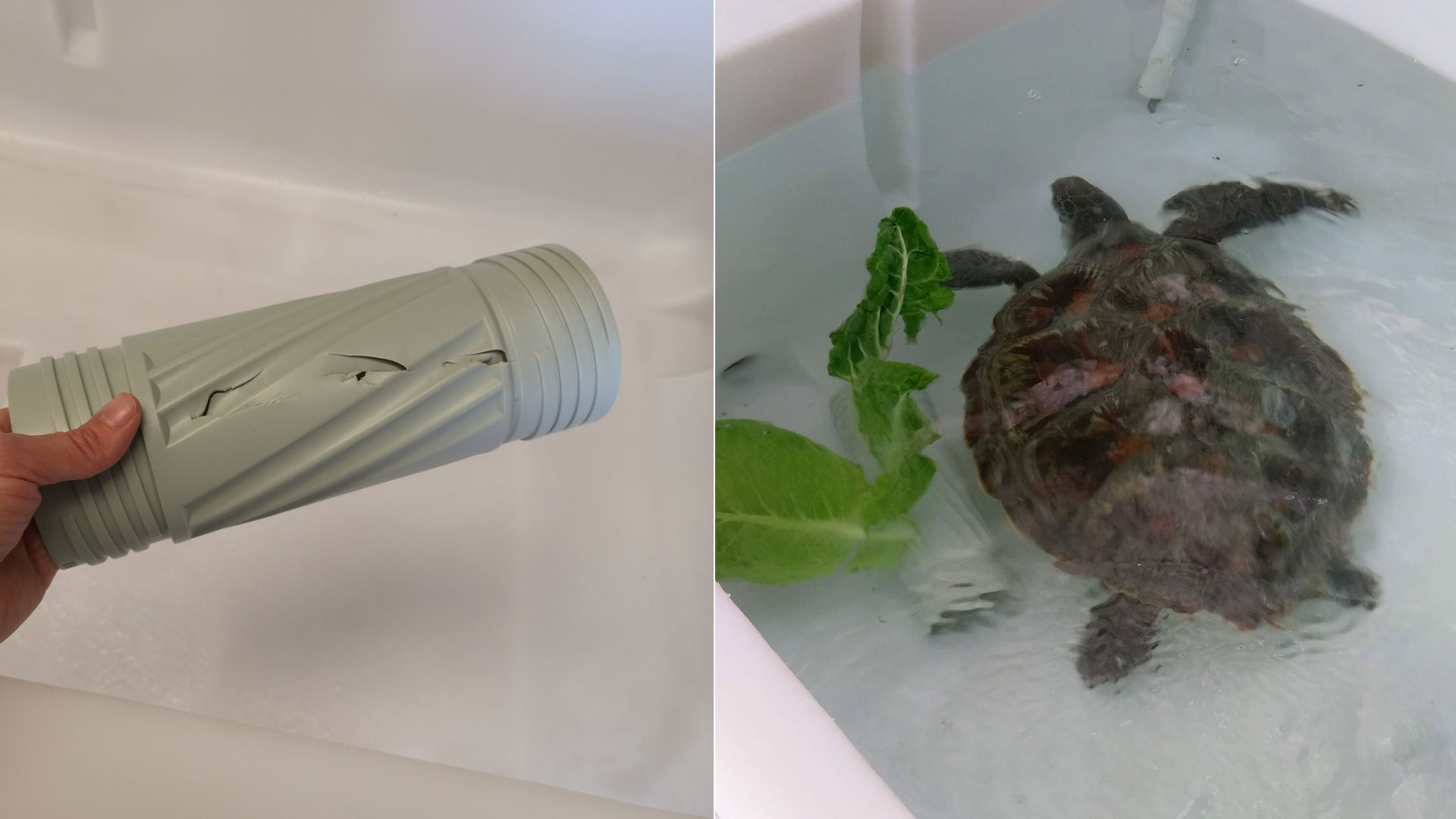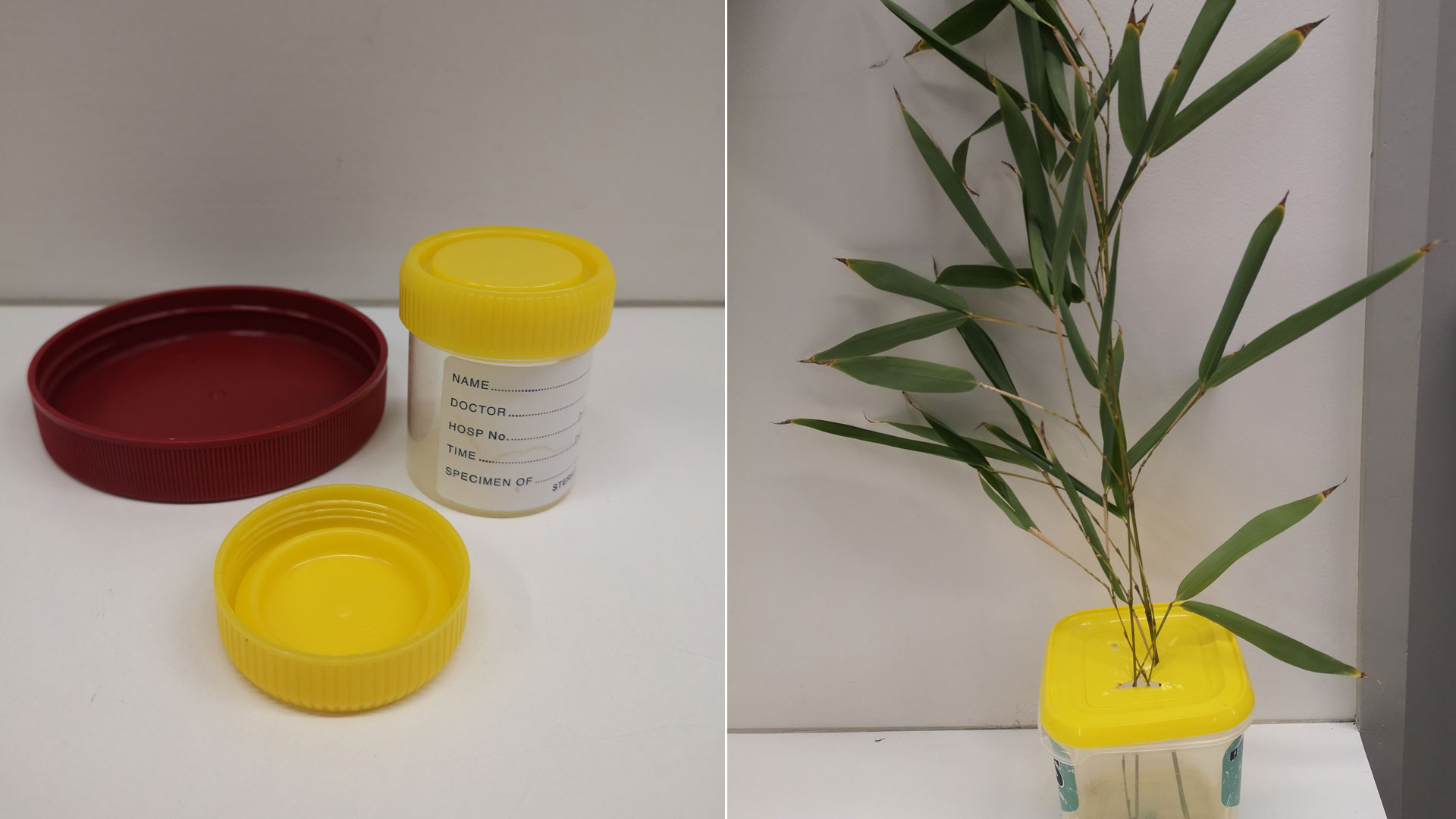At Auckland Zoo’s veterinary hospital, you’ll find an exceptionally talented team of people, lots of state-of-the-art technology and equipment, and specially designed areas that all ensure the animals we treat receive the very best of care.
Our veterinary team - passionate and inventive recyclers!
Jane Healy, Auckland Zoo
You’ll also find everything from recycled sheets, towels, blankets, and socks to reusable plastic bottles fashioned into anaesthetic face masks for kiwi, flamingo, and larger patients like capybara, lions, and orangutans.
Old newspapers and cardboard boxes help furnish some animal patient enclosures, yoghurt makers help keep animal food warm, and a recycled poster tube becomes the perfect lettuce feeder for a green sea turtle. Water-filled plastic pet food tubs with perforated lids keep browse (plant food) for small animals, fresh, and a piece of piping serves as a safe haven for a lizard patient. The list goes on!
Reducing, reusing, and carefully recycling is second nature to our passionate team of vets and vet nurses. The team regularly treat injured animals from the wild and see first-hand the impacts and devastating consequences that plastics and other products we humans use and unthinkingly discard, like fishing hooks, can have on our precious wildlife and their ecosystems.
Celine Campana, a veterinary nurse for over two decades, that’s included many years assisting a sea turtle charity helping protect endangered sea turtles on the beaches of Greece and Costa Rica, is always thinking about creative ways to work and live sustainably.
Recycling safely for longevity
“When you really start thinking about it, there’s so much we can all do. Reducing what we use is the biggest thing, and that’s where reusing and recycling comes in,” says Celine, who joined the Zoo in 2017.
“Here at the vet hospital, everything we re-use and recycle is cleaned, disinfected, and/or sterilised to our hospital standards to ensure the health and safety of patients and staff. In doing this, we give all these things a long life and so dramatically lessen the volume we use, and that’s way better for the environment.
“Last year our wonderful volunteers made us reusable surgical masks. They’re 100% cotton and created from a pattern approved by Belgian’s government and medical profession that our senior vet, Dr An Pas, tracked down. We can wash and sterilise them after each use, and this means we’re not having to use single-use masks –which sadly, due to Covid-19, we’re now seeing discarded everywhere – from our streets and parks to beaches where they’ll end up in our oceans.”
“The great thing is reusable masks are now easily available – we’ll even be selling them at the Zoo once we can reopen. As we are all going to need to use them for some time to come, I’d really love to see more Kiwis wearing these sustainable masks – for their own health, as well as for our wildlife and wild places!”
Creating animal masks a team effort
When it comes to anaesthetic face masks for the Zoo’s animal patients, there are no off-the-shelf products for the likes of a long-billed kiwi, a wide-billed flamingo, or larger animals like, capybara, lions or orangutans, so the team have had to get creative!
“Regular animal masks are very circular and made for cat and dog faces. For all our animal patients requiring general anaesthetics, we need something that whole nostrils, and the mouth can fit into and form a seal.
“We’ve repurposed plastic bottles of various sizes, with purpose-built connectors. By cutting a hole in the lid, we can place a regular gas mask connector inside (also reusable). We use rubber around the opening that we’ve also recycled from old black rebreathing bags – these bags are the ones on the anaesthetic circuit that move as the animal breathes – which people may have also seen in hospitals or on medical television shows.
“This rubber then molds itself around the animal’s snout (nose and mouth) to prevent leakage of anaesthetic and gas and oxygen. It’s a real group effort to create, and a technique that many zoos use,” explains Celine.
Keeping warm under anaesthetic
Just like humans, under anaesthetic, animals can’t move around or even shiver to maintain their body temperature, which for big cats is 38 degrees centigrade.
So for a cheetah procedure for example, the vet team, who will be assisted by our specialist Carnivore keepers, put bubble-wrap and socks on their paws as soon as they’ve gone to sleep, to prevent them from losing heat. In addition, they use a hot air machine, and of course, their body temperature along with all other vital signs, are monitored throughout.
Donated socks, towels, blankets or sheets – whether for veterinary procedures, or used as part of soft and supporting floor covering for the likes of kākāpō patients – are all disinfected, washed and dried by the Vet Hospital’s dedicated (and very thorough!) volunteers.
Reusing medicine and insect pottles
The health and wellbeing of the animals in the Zoo’s care is a very collaborative effort between the veterinary team and our zookeepers who are all part of our Animal Care & Conservation team.
While the vets may prescribe the medications, it’s often the keeping staff who are administering them to the animals that they’re caring for on a daily basis.
Frequently used medications are often bought in larger quantities by the vet hospital, and just like a pharmacy for humans, vet staff then dispense what’s required in little brown pottles. Once the course of treatment for an animal is complete, the keepers return the pottles for the vet team to clean and reuse.
“It’s the same with the insect pots we receive via the keepers for any of insect-eating inpatients - like bearded dragons, native geckos and birds like kiwi and pāteke. These are washed and cleaned, and thanks to a great initiative by our Green Team, they are returned to our insect supplier to be reused for ongoing orders,” says Celine.
Reducing and recycling plastic is vital
According to the International Union for the Conservation of Nature (IUCN), the world produces 300 million tonnes of plastic every year, 50% of which is single-use, and 8 million of which ends up in our oceans and makes up 80% of all marine debris.
The IUCN says plastic pollution is the most widespread problem affecting the marine environment - threatening ocean health, food safety and quality, human health, coastal tourism, and contributes to climate change.
“It’s easy to feel overwhelmed by figures like this, but the power is in all of our hands to turn the tide and collectively make a truly positive difference. This can be by doing really easy, simple things every day, and encouraging others to do the same,” says Celine.
“Use material bags for shopping, try purchasing things second-hand rather than new, especially plastic items, or choosing products made from or packaged in glass or metal rather than plastic. My partner and I always buy peanut butter in a jar rather than a plastic tub, and our local takeaways are very used to us handing over our own containers for kebabs and sushi! It’s great to also donate any unwanted (but still good quality) clothing and household goods to charities – giving them a second life and supporting your community.”



